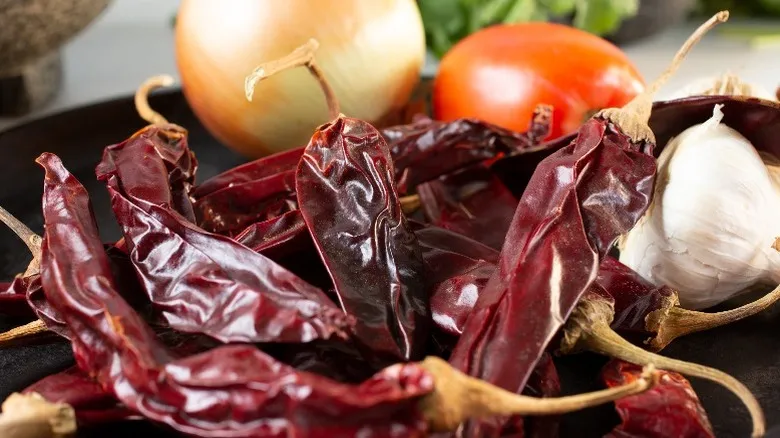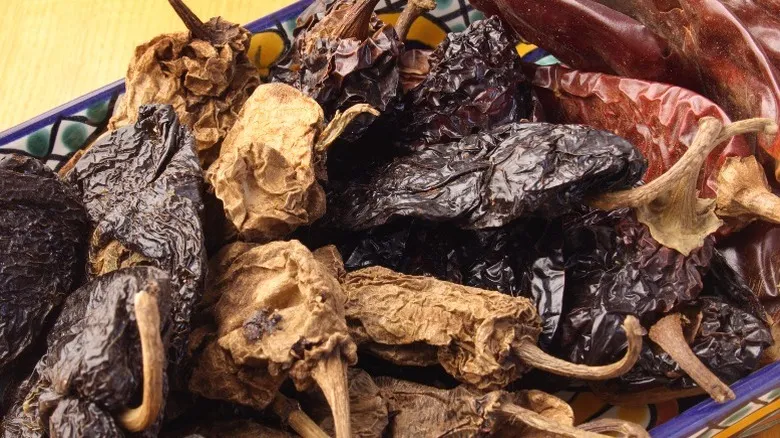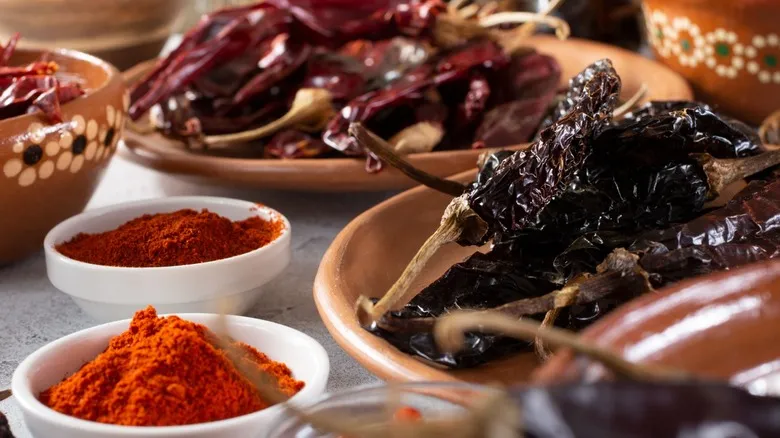Light chiles provide vibrant flavors

When discussing dried chiles, most light-colored varieties are primarily red, showcasing a range of shades from brown to bright red and burgundy. Typically, these chiles deliver vibrant flavors with hints that can be fruity, smoky, earthy, or nutty, depending on the specific type. Light chiles often have a subtle acidity beneath their flavor profile.
However, the heat level can vary significantly: tiny pequins are intensely flavorful and fiery, while guajillos tend to be sweeter with tangy undertones. Chipotles are well-regarded for their moderate heat and the smoky flavors developed during their fire-roasting process. In contrast, chiles de árbol offer nutty, earthy notes while still packing a spicy punch. A good rule of thumb is that smaller peppers usually have more heat. For a well-rounded choice, opt for a medium-sized light-colored pepper that provides a harmonious blend of flavor, spice, and acidity.
Expect more savory, sweet notes with dark chiles

Dark peppers are easily recognizable due to their deep black, brown, or purple hues, which can be accentuated in dishes such as mole or adobo negro. These peppers typically have thicker, chewier skins, although this characteristic alone does not determine their classification. The taste of these darker chiles is reminiscent of other dried fruits, featuring hints of raisins and prunes along with smoky undertones. In comparison to lighter chiles, most peppers in this group are not overly spicy, though some may have a slight heat.
Many of these peppers are the dried forms of larger chilies at various stages of ripeness. For example, anchos are dried red-ripened poblanos, offering a delightful blend of smoky, spicy, and fruity flavors. Mulatos are derived from the same pepper but are allowed to ripen longer, resulting in deeper chocolate notes. Pasilla peppers and chiles negros provide more raisin-like flavors. If you're looking for a different dried fruit taste, cascabels present flavors akin to dried apricots with a subtle nutty hint. Like lighter chiles, dark chile varieties are rich in nuance, but they generally lean towards a sweeter profile.
Each style comes with go-to culinary applications

With a variety of flavor profiles, it's easy to see why these two types of peppers have unique culinary uses. Depending on the dish, the peppers can be toasted and often soaked, resulting in a fragrant pulp that blends seamlessly with other ingredients.
The rich, fruity notes of dark chiles make them a favored choice for mole. Similarly, these varieties are frequently incorporated into marinades and stews, where they add depth and improve texture. You’ll often find these chiles in salsa, with the lively sweetness of cascabel and ancho being particularly popular. In fact, the natural sweetness of dark chiles allows them to even shine in desserts — Joanna Gaines adds a spicy twist to pecan pie using ancho chile.
On the other hand, light chiles offer a more pronounced vibrancy and heat, often serving as a bold accent in dishes. Puya peppers are typically used as the foundation for menudo, while guajillos are key ingredients in the sauce for tortas ahogadas (or "drowned sandwiches"). The versatile chiles de árbol add a distinct kick to simmered enchilada sauce. Like their darker counterparts, light chiles can be used in a variety of delicious salsas, showcasing their adaptability. You can also enjoy the best of both worlds by combining them, especially in complex dishes like moles, stews, and salsas where you want the chiles to create a uniquely layered flavor profile.
Recommended

Is There Water In Whole Milk?

What Is Hazmat Whiskey, And Why Would You Even Want It?

Is It Safe To Make Popcorn In The Oven?

Why Baking Powder Is The Missing Ingredient Your Scrambled Eggs Need
Next up

